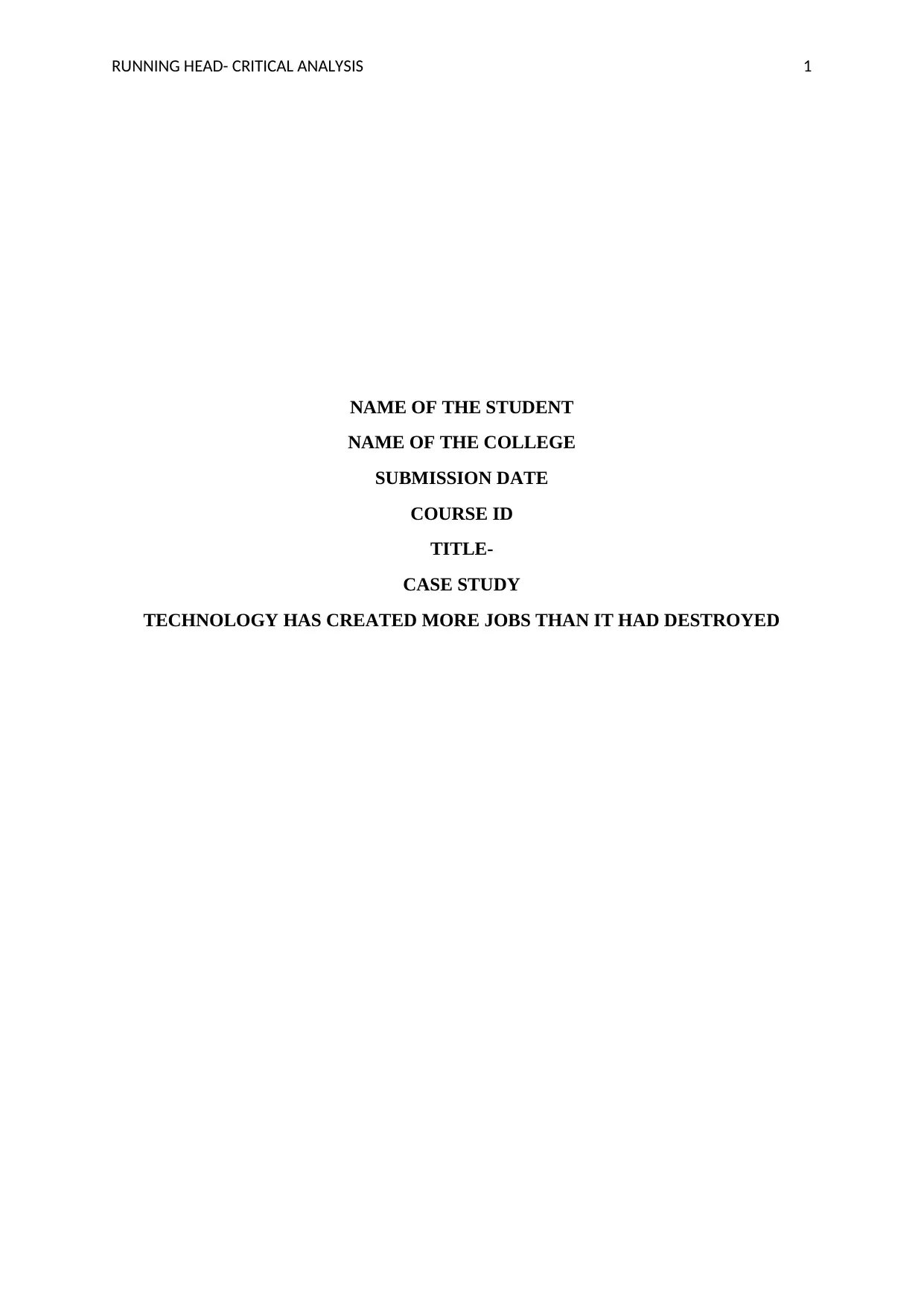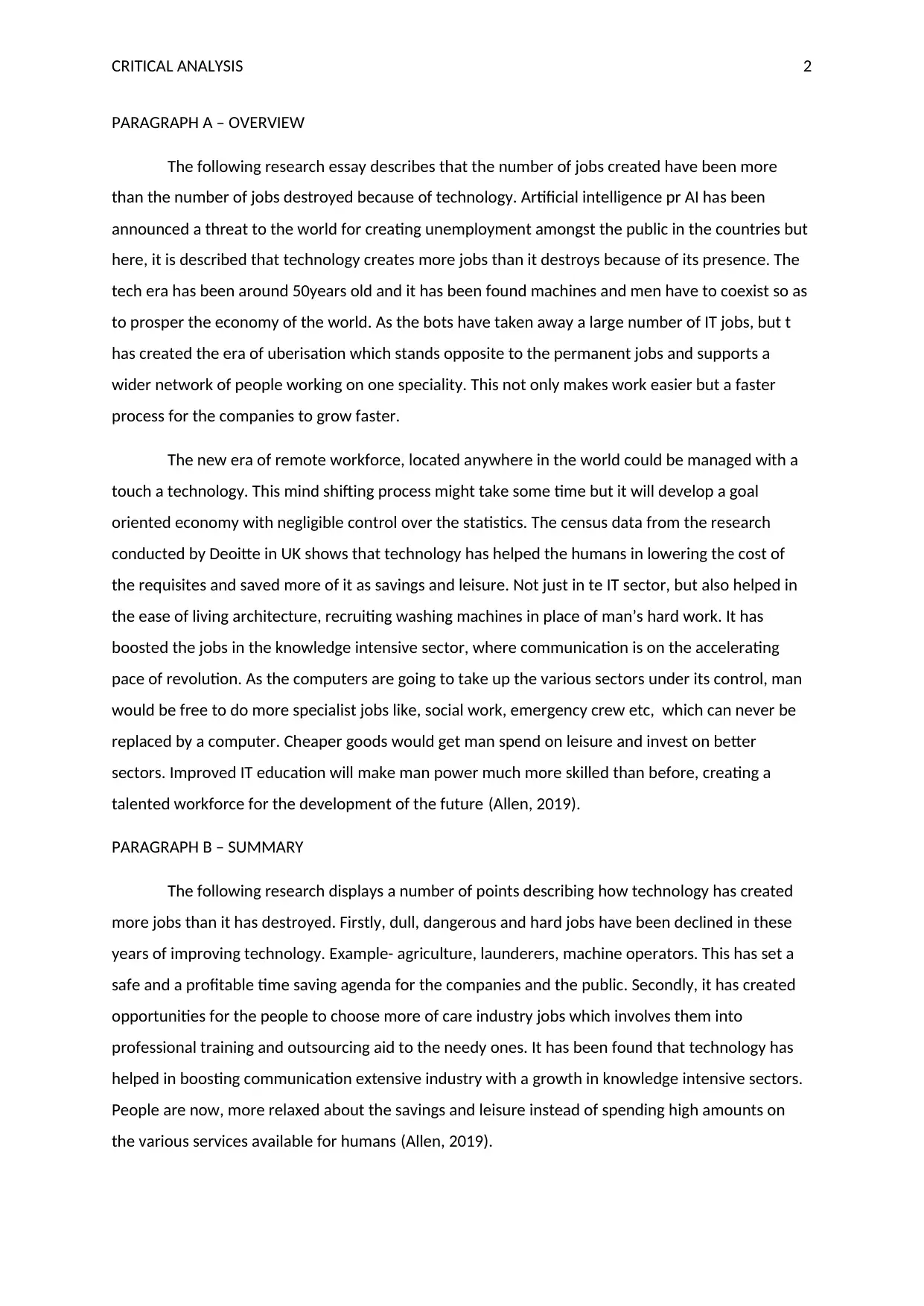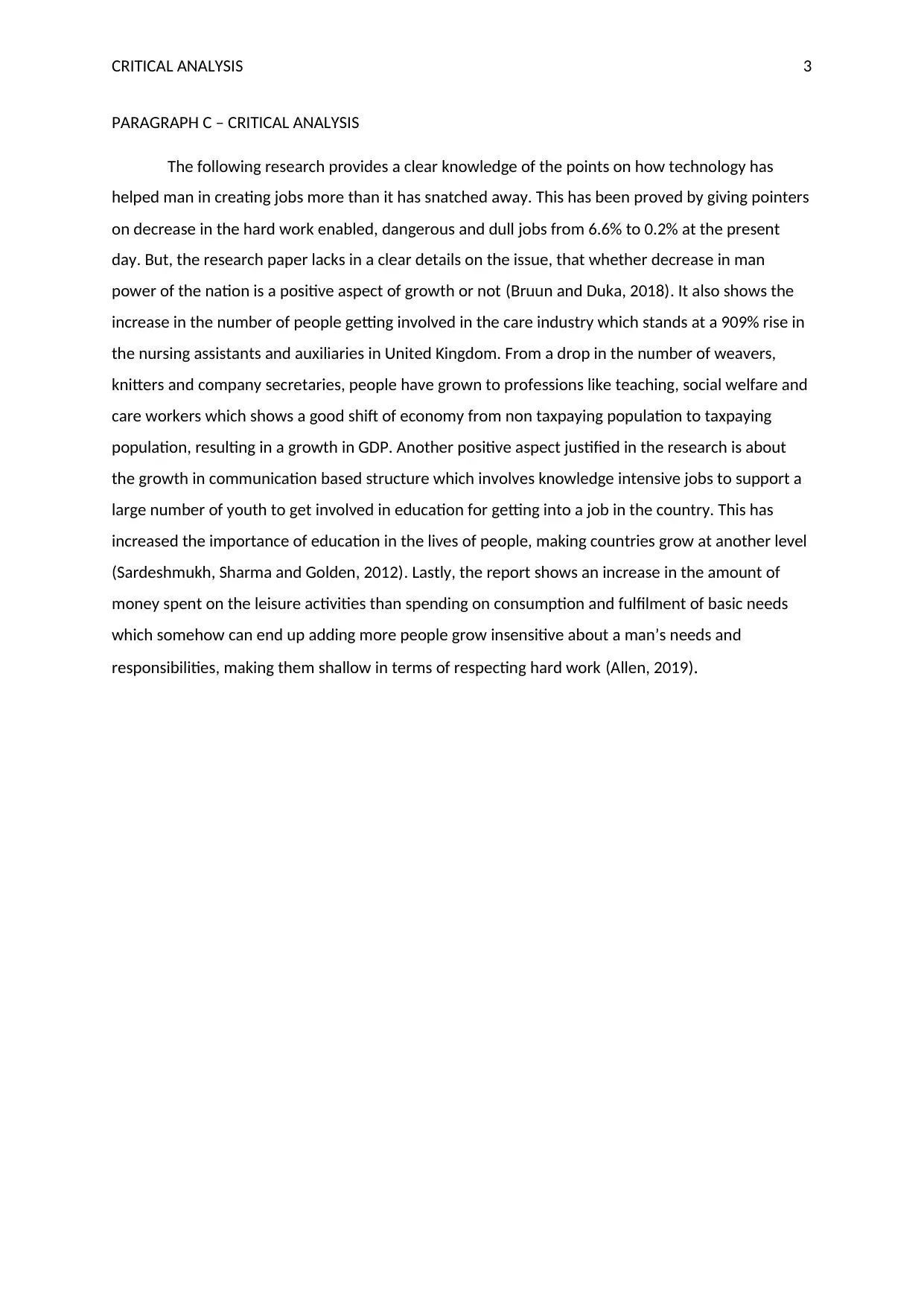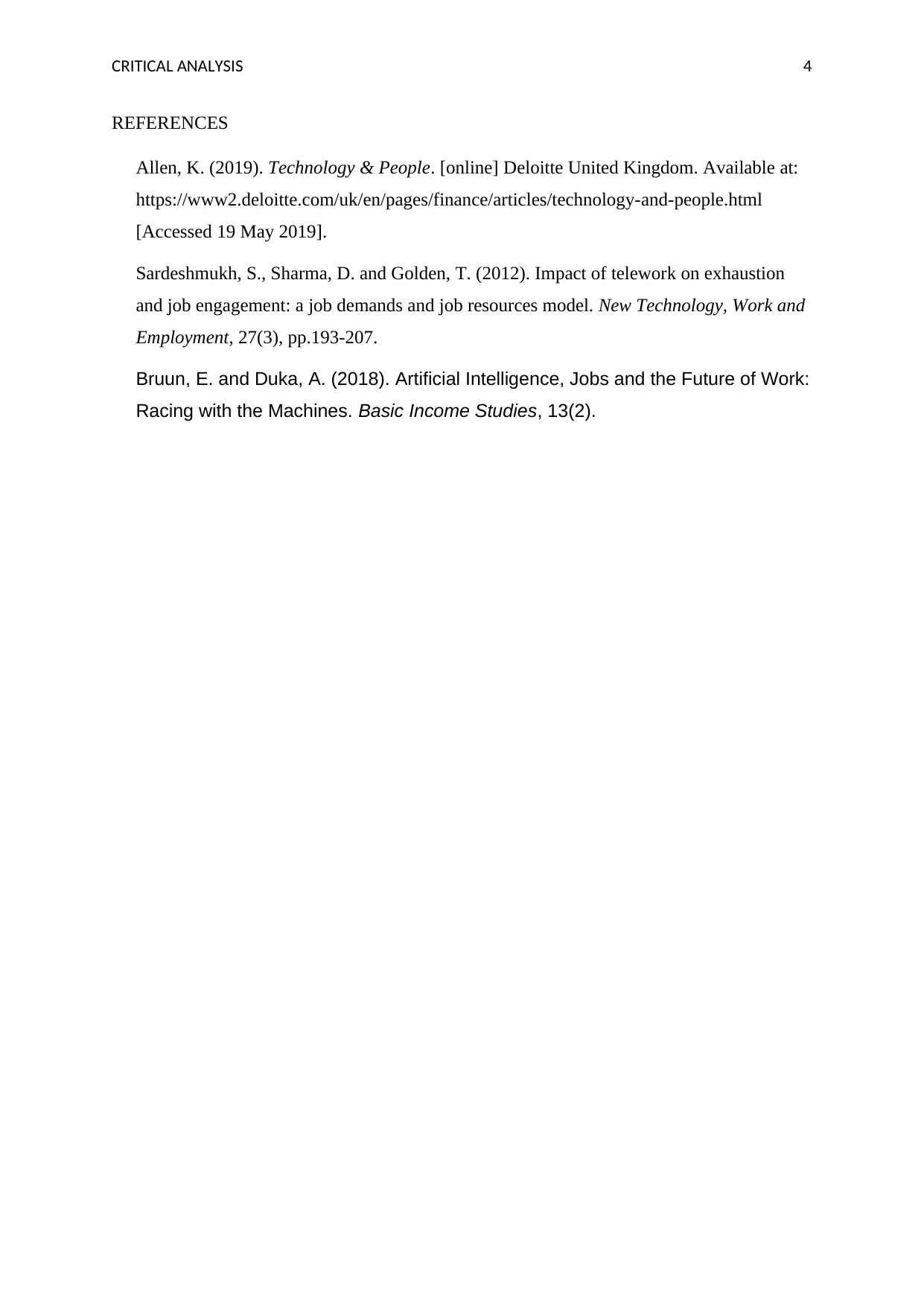Critical Analysis: Technology, Job Creation, and Economic Growth
VerifiedAdded on 2022/11/23
|4
|974
|161
Report
AI Summary
This report presents a critical analysis of the impact of technology on job creation, arguing that technology has created more jobs than it has destroyed. The analysis is structured around a case study, beginning with an overview that highlights the co-existence of machines and humans in the tech era, and the rise of "uberisation" leading to a more flexible job market. The report then summarizes key points, such as the decline of dangerous jobs and the rise of care industry jobs. A critical analysis follows, providing detailed insights on the decreasing hard labor jobs, the increase in care industry jobs, and the growth in communication-based jobs. The analysis uses the research conducted by Deloitte in UK and also explores the potential negative impacts, such as increased focus on leisure activities and reduced emphasis on hard work. The report uses references from Allen (2019), Bruun and Duka (2018), and Sardeshmukh, Sharma and Golden (2012) to support the arguments.
1 out of 4











![[object Object]](/_next/static/media/star-bottom.7253800d.svg)